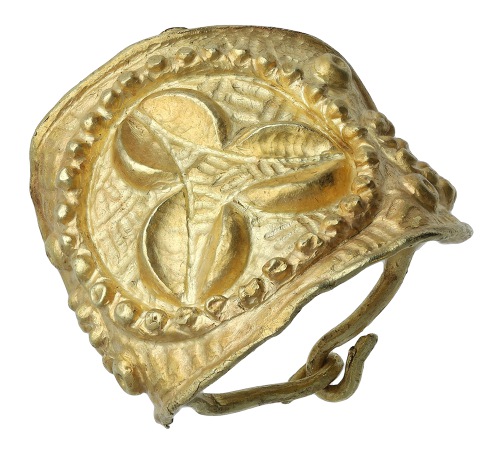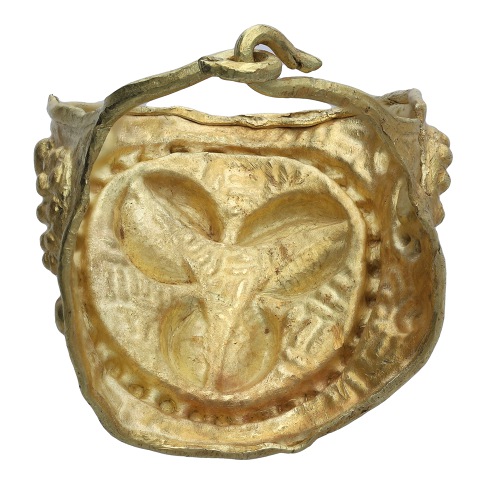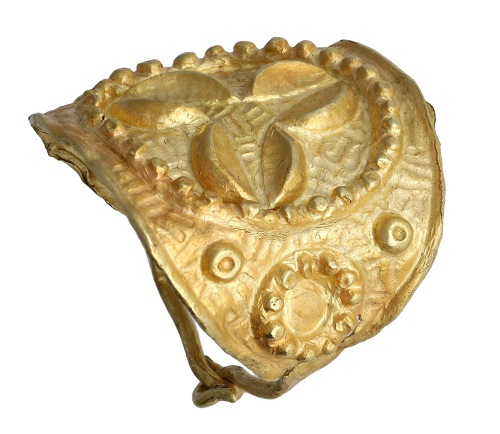Auction Catalogue





The Knaresborough Iron Age Gold Ring,
a unique and highly important artefact
Celtic, a gold finger ring, c. 100 BC, 22mm diameter, bezel 25mm wide, 5.41g; formed from sheet gold and die-hammered from behind (repoussé) creating in high relief a trefoil shape from three pairs of crescent lips in the centre of the large oval bezel, bordered by a ring containing twenty-nine equally spaced pellets; the sloping and tapering shoulders are decorated with a central berried rosette flanked by annulets on each side; the field is entirely decorated with broad cross hatching or basketry infilling which is a secondary punching made from the front of the ring; the narrow hoop is circular in section and looped together at the back. Extremely fine but with a tear across part of the lower edge £24,000-£30,000
Found at Knaresborough in 1994 and declared to the North Yorkshire coroner under the Treasure Trove law where it was declared a stray find and therefore not Treasure. The British Museum examined the ring, suggesting it was from the Snettisham workshop, which highlights its importance as the only surviving finger ring of this style. It has been in a private collection since that time, and this is the first time it has been offered for sale at auction.
Gold in Iron Age Britain had been used conservatively in the 3rd and 2nd centuries BC, but British tribal nobility revived its importance and status during the 1st century BC. This ring represents the Snettisham style V ornamentation (from the hoard of gold torcs and armbands found in Norfolk in 1948) which is a distinctive abstract British style that has become synonymous with the royal treasury of the Iceni tribe that ruled a large part of East Anglia. The execution and refinement of the sheet gold work from Snettisham is unparalleled on the continent. In Yorkshire bronze workshops from the 3rd century BC are thought to have developed the style of art which peaked with the Snettisham ateliers. Die-stamped Brigantian artistry can be seen on the 1st century bronze hoard from Stanwick in Yorkshire. The trefoil design also appears on coinage (a North Eastern Corieltauvi gold stater) and is believed to be inspired by the three-leaved clover. The rosette or petalled sun ring also appears on silver units of the Corieltauvi tribe. It is likely the Knaresborough ring was worn by a Corieltauvi chieftain along with a neck torc and armbands as a symbol of his high status.
Share This Page